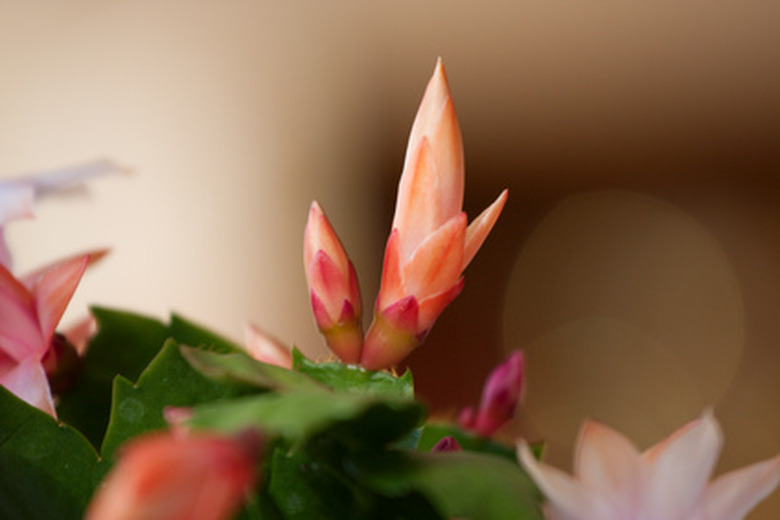How Many Hours Of Darkness Do Plants Need?
The home gardener pays particular attention to providing sufficient light for germinating seeds, growing healthy seedlings and keeping plants lush, green and flowering. Plants need more than the right kind of fluorescent light or the latest LED grow-light, however. Many plants need downtime, an absence of light, to begin seasonal growth or to produce fruit or flowers.
Step 1
Photoperiodism is the sensitivity of a plant to the amount of light and darkness it experiences. All plants require some light to carry out photosynthesis and turn carbon dioxide into energy for growing. For a photoperiodic plant, Purdue University's department of horticulture explains, the specific light-dark balance each day determines its overall health and whether it will flower or fruit. Plants fall into three categories of light sensitivity: long-night (short-day) plants, short-night (long-day) plants and indeterminate plants.
Long-Night Plants
Step 1
Long-night, or short-day, plants need more darkness than average to flower. Poinsettia, gardenias, kalanchoes, Christmas cactus and chrysanthemums can require up to 18 hours of darkness in each 24-hour period for several weeks before flowering. Each photosensitive plant has its own set point for dark-light balance. Long-night houseplants may need to be grouped by darkness requirements and isolated from other indoor greenery so that the duration of their exposure to light can be separately controlled.
Step 2
- Photoperiodism is the sensitivity of a plant to the amount of light and darkness it experiences.
- For a photoperiodic plant, Purdue University's department of horticulture explains, the specific light-dark balance each day determines its overall health and whether it will flower or fruit.
Short-Night Plants
Step 1
The short-night, or long-day, adaptation of certain plants is a response to their evolution at specific latitudes. Plants that grow farther from the equator are accustomed to limited growing seasons when the days are very long and the nights shorter. This is true for a number of annuals that have a brief window for flowering as the hours of sun lengthen and then shrink from spring through summer and into fall. Asters, California poppies, coneflowers, lettuce and spinach are all short-night, long-day plants that need 12 hours or more of sun or light each day for several weeks to trigger flowering and growth.
Indeterminate or Day-Neutral Plants
Step 1
Most flowering house and patio plants are indeterminate or day-neutral. Strawberries, tomatoes, geraniums, African violets and roses are day-neutral. They do not have exacting light duration requirements that control whether they flower, produce fruit, remain green or generally thrive, although they are happiest with eight to 12 hours each day of good light. Fine-tuning light and its attendant conditions will affect the appearance and health of indeterminate plants. Low-intensity light can inhibit photosynthesis, stem length, flowering and color. Gardeners can compensate for low light intensity by adding more or stronger light, lowering the source of light closer to the plants or increasing the duration of light.
Step 2
- The short-night, or long-day, adaptation of certain plants is a response to their evolution at specific latitudes.
- Asters, California poppies, coneflowers, lettuce and spinach are all short-night, long-day plants that need 12 hours or more of sun or light each day for several weeks to trigger flowering and growth.
